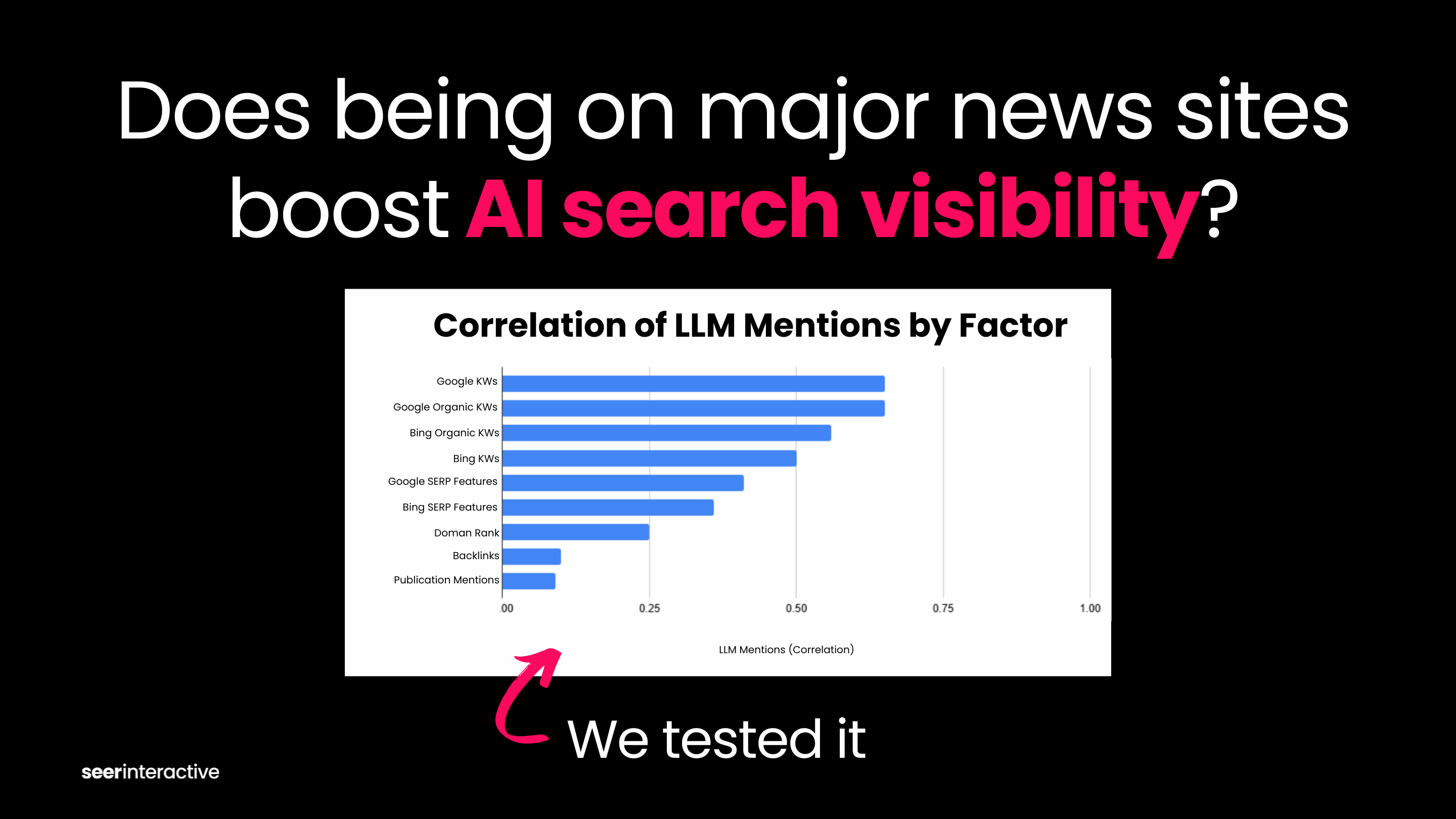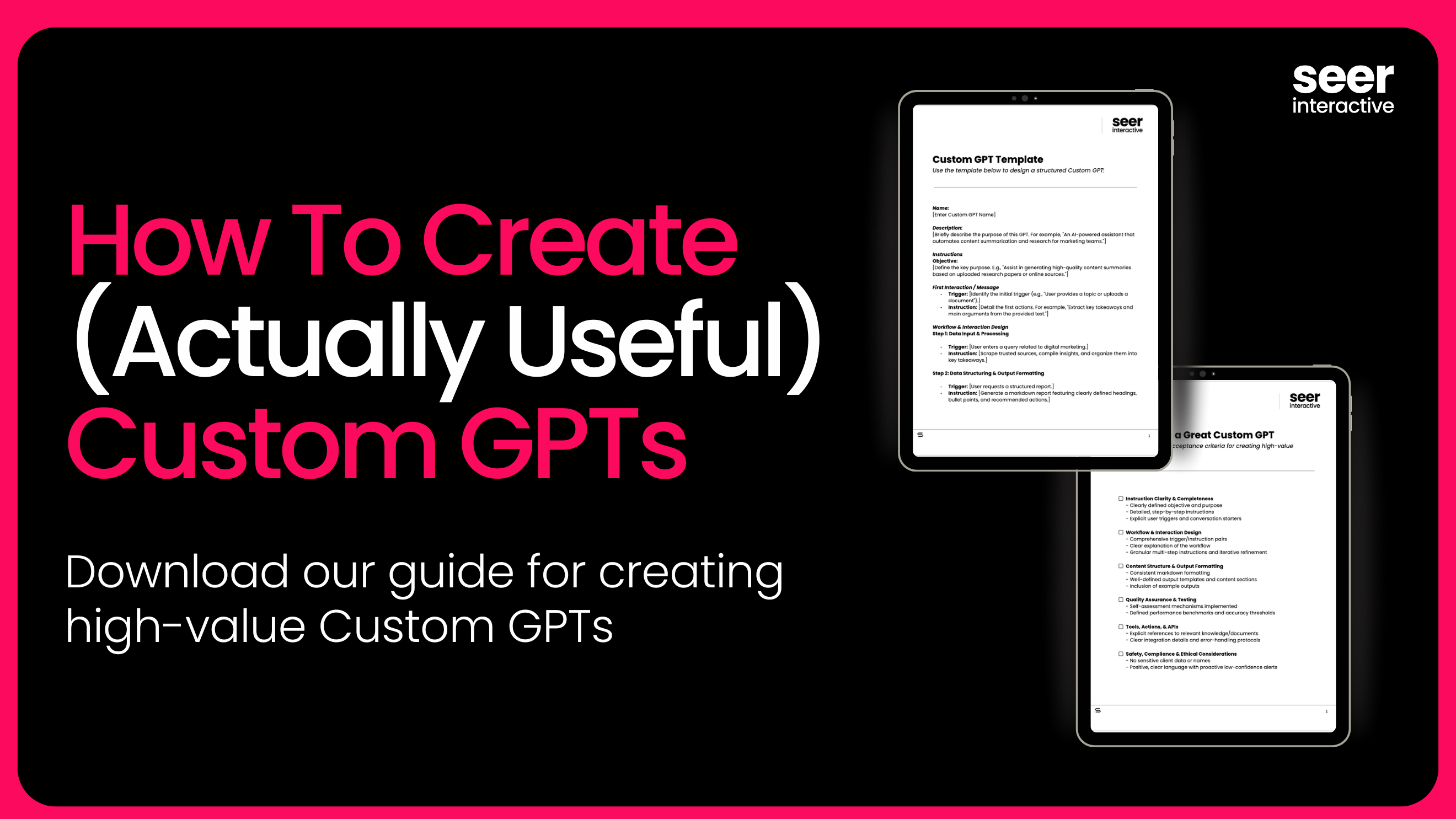87% of marketing professionals have used or experimented with AI according to an eMarketer survey from August 2023.
As an industry, it’s clear we’re finding value.
However, there’s a growing group of organizations partnering with their IT and Risk Managers who are waiving the red flag on AI usage.
A Fishbowl survey from February 2023 reported that 70% of those surveyed that use AI for work related tasks are doing so without their boss’s knowledge.
If you’re seeing the value of what AI can bring to your organization, but are facing challenges when it comes to your Leadership team, my goal is to arm you with resources to build a business case to bring to them.
My colleague, Alisa Scharf, already covered the 4 steps we advise you to take to build the case for using generative AI:
Step 1: Identify the concerns of your AI gatekeepers
Step 2: Empathize with them to understand risks
Step 3: Create a risk mitigation plan and compromise
Step 4: Talk value
I’m going to dig in deeper on step #4 - Illustrate the benefits in clear, tangible terms to CEOs and CMOs.
Understand Your C-Suite’s Perspective
Put yourself in the shoes of your C-Suite
Take the CMO of a challenger brand, for example - they’re planning what their next move should be to continue taking market share away from the top dog in the industry.
They need their team working efficiently and effectively, and introducing the wrong new technology into workflows could set the team off track for months, risking time and dollars to their bottom line.
Only 45% of CMOs say they are investing in marketing technology & automation, yet productivity & profitability and tech modernization are cited as the top CEO priorities over the next 3 years.
Combine that with recent market shifts and tightening of budgets, and something isn’t adding up.
Shouldn’t every C-Suite be fully bought in on the potential to work faster, cheaper, and better?
Our hypothesis is the lack of proven information around how AI stands to make an impact is slowing down risk averse C-Suites.
Potential C-Suite Concerns on Investing in AI Technology
Not everyone can always get the time they need with a C-Suite team member to better understand their concerns. But there's alternatives to getting the information you need!
For example, we used ChatGPT to help us start to understand what they would consider concerns of the C-Suite:
|
Integration & productivity concerns |
How do I find the time to train & integrate the technology into our current processes without disrupting workflows? |
|
Work quality |
How do I ensure the outputs are aligned to our brand standards, and limit reductions in overall work quality? |
|
Team culture |
How do I reinforce the idea that job access is not at risk, while upholding current team culture & values? |
|
Customer trust & data privacy |
How do I embrace the technology without risking customer loyalty, data privacy & trust if something goes wrong? |
|
Long-term costs |
How do I protect the bottom line against unforeseen long-term costs including maintenance, updates and changes to the technology? |
|
Legal concerns |
How do I strike a balance with my IT, Legal and Compliance teams? |
Even if you can get time with your stakeholder, you should always come prepared with something for them to react to. Show them that you've done some thinking on their potential pain points.
Focus on Value Types Your C-Suite Cares About
The concerns from your C-Suite are valid, and must be considered in order to secure buy-in from these individuals.
So how do you prepare for this conversation?
Focus on the benefits and value the technology brings to your organization from a C-Suite perspective.
Start with the 4 basic value drivers that affect a businesses' bottom line:
1. New Revenue
- Can the use of AI drive a faster cadence of improvements in your content optimizations, keyword rankings, content performance, traffic, conversions, and ultimately your revenue & bottom line?
- Can you 2x or 3x your content production, repurposing your content resources to provide reviews, quality control, publishing, and promoting?
- Can a new resource or calculator be created for your website using AI that can directly drive new customers into the funnel, avoiding using expensive Dev resources?
- How much further ahead in content production is your top competitor, and how much faster can you bridge the gap with the use of Generative AI?
2. Cost Savings
- Can you save time on writing or updating content manually and redeploy those resources to other high priority tasks?
- Will your Customer Service team save time from manually responding to questions by introducing AI via live chatbots to handle the most common questions?
- Identify your top 2-3 team members who are potentially wasting hours each week on automatable tasks. What more can you now accomplish after this redeployment of resources? Translate those time savings into dollars.
- Can you close out a new hire requisition or reduce spend with a current tool subscription? What’s the cost savings of this change?
- Keep in mind, the initial resource redeployment could have an upfront cost (building an AI chatbot), but it’s important to focus on the long-term cost savings of these changes
3. Cost Avoidance
- Does introducing the new technology (small upfront investment) into current workflows save you potentially 2x, 3x more in the future in avoidance of a critical issue down the road?
- Can you leverage AI to help generate or QA code needed to fix a critical technical issue prior, avoiding additional agency charges?
4. Insurance
- Do you have your Developers or Technical SEO team regularly monitoring your website for critical issues? Can you instead invest in AI to do this job? Investing in the insurance monitoring today can potentially catch an issue before it balloons to a larger issue, saving you costs down the line
- Can you implement a technology to set up custom alerts for competitor monitoring, including when your top competitor launches new content or makes a jump in visibility?
Build a Business Case
Once you’ve collected the benefits that make sense for your business and considered your C-Suites top concerns, you’re ready to build your business case.
You can leverage 1 or all 4 of the value types to build your case.
Remind yourself of the position your C-Suite is in, and what their top priorities currently are. How can your business case for investing in AI enhance or improve those priorities?
Step 1: Outline the current problem or challenge
- Let’s say your Marketing & Sales teams are tight on bandwidth, and have limited budgets to hire. Your 10 Customer Service team members have skill sets to contribute to Sales & Marketing, but no bandwidth to do so
- You were even prepared to hire an 11th Customer Service person
- Your C-Suite have cut Sales & Marketing budgets given market shifts this year
- The Manager of Marketing & Sales comes to you asking if you have additional resources to help them out
- In this case, it costs more to hire new talent and train them vs. leveraging existing internal talent
- Furthermore, OpenAI cites approximately 80% of the workforce could have at least 10% of their work tasks affected by the introduction of GPTs
Step 2: Add in costs
- Include how many resources, how much time, and how much the current plan is going to cost
- This might already exist in the current P&L, so work with your Leadership to gain access to the current forecast to save yourself some time
[TIP] In this example, if you were to increase labor costs and operating expenses by hiring 1 additional Customer Service person, then you would expect a declining impact on net margins within your P&L Statement
Step 3: Form your hypothesis that includes AI
- IF we invest in an AI chatbot today, THEN we can move 10% of our Customer Service team members to support Marketing & Sales
Step 4: Add in the 4 value types
- Are you generating new revenue, saving costs, avoiding costs, or investing in insurance?
- IF we invest in an AI chatbot today, THEN we can move 10% of our Customer Service team members to support Marketing & Sales, and we can expect to SAVE COSTS from not hiring an 11th Customer Service person
Step 5: Build a mock P&L
- Demonstrate when you expect the impacts to be realized. Is there an immediate cost savings or will it take 3-6+ months to assume the savings or see the new revenue hit the top line? Know you can only do so much as estimate at this time, but it’s important to build as accurate of a forecast as possible
- Do you expect new customers to sign on as a result? When can you expect that to happen?
- Can you remove or re-allocate the additional labor budget related to hiring as that won’t be needed as a result of introducing the technology?
- Will you be able to shift labor resources to benefit another part of the business?
- Do your COGS tool costs change?
[TIP] In this same example, an investment in the AI chatbot would result in a short term negative impact to your net margins via a COGS increase. However long-term, the chatbot and the extra help on Marketing & Sales would generate more returning and new customers. You’re also saving on labor & operating costs to hire and train 1 new person. This would result in greater top line revenue and ultimately, higher net margins.
Step 6: Include your plan for measurement
- How will you test if your hypothesis is working as expected? Is this time bound? Your C-Suite will look to poke holes here, so be prepared and consider all of the potential outcomes
- IF we invest in an AI chatbot today, THEN we can expect to DRIVE NEW REVENUE and SAVE LABOR COSTS BY MEASURING net profit margin growth over the next 6 months
Next Steps
Even after considering the position of your C-Suite, outlining the benefits and building your business case, you still may not have full approval from Leadership for investing in AI. Hopefully however, these tips have helped you start the conversation and open up new pathways within your organization. As with any new change in the market, consideration for investment takes time and careful reflection. If you’re still struggling to make the case, here’s a few final next steps to take into Q4 and the new year.
- Sit down with your Manager, review your business case and listen carefully to their concerns
- Ask them to clarify other stakeholders within the business who have a final say in this decision
- Understand what those stakeholders concerns and priorities are
- You may need to make 2-3 individual pitches to these other stakeholders, with the ultimate goal of getting them all into the same room to pitch your final recommendation
- If you’re still facing challenges, continue keeping tabs on how AI and the technology is changing. There may be new advancements in the technologies that ease the concerns you’re hearing today


